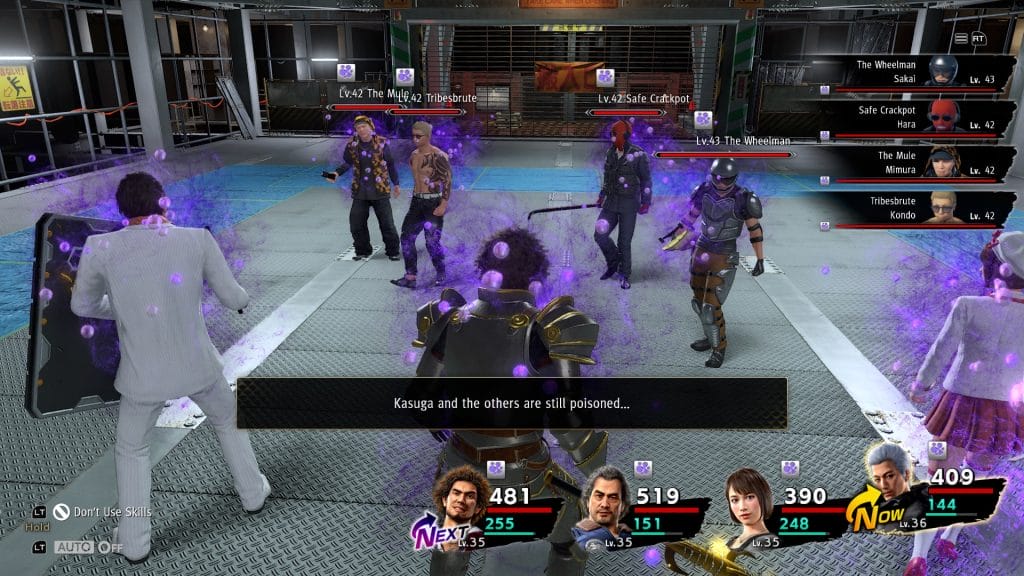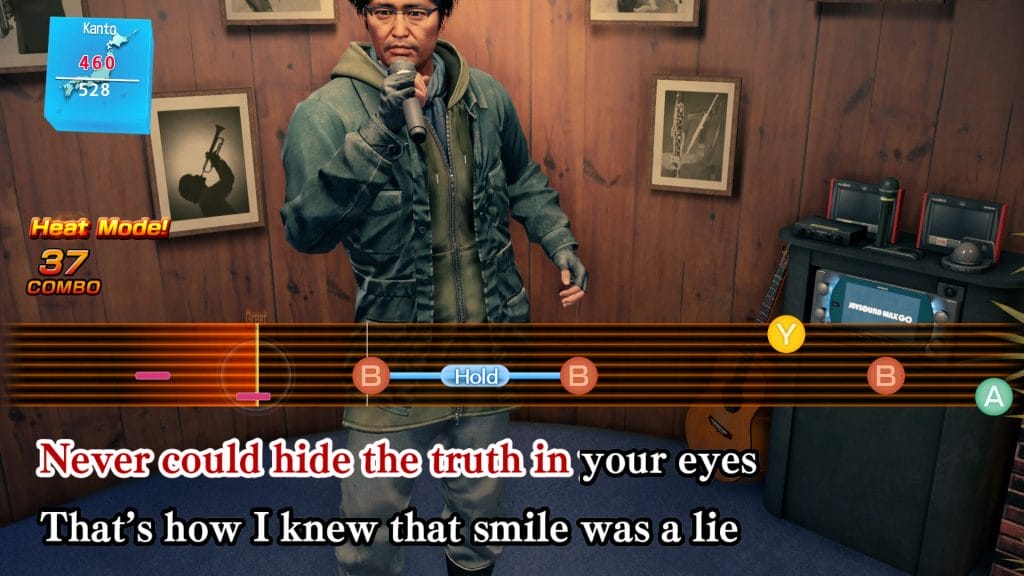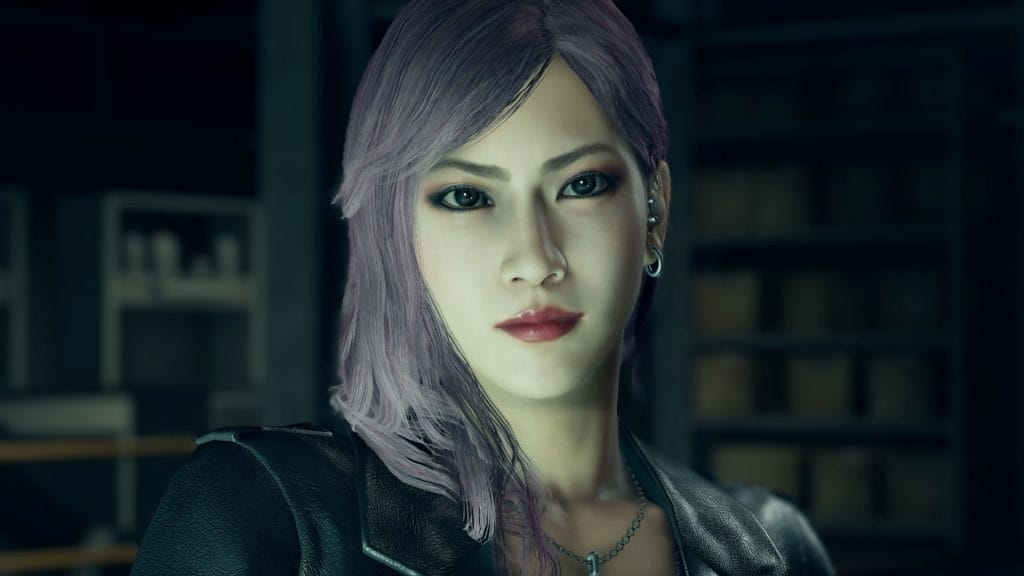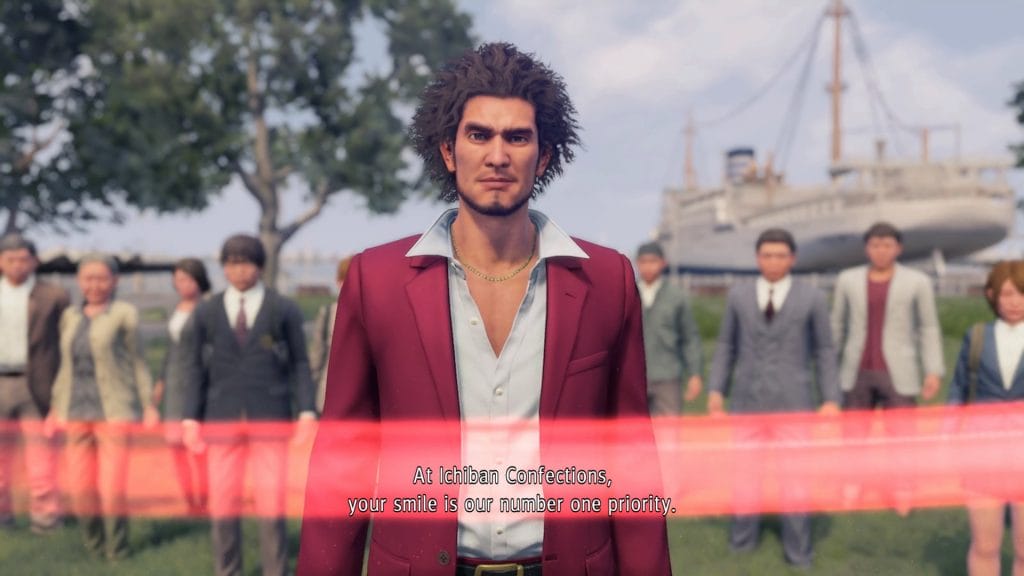Ever since I played Yakuza 0 in 2017 on PS4 and every game in the series since, I’ve been noticing how they feel a lot like JRPGs structurally but with brawler combat. Encounters with enemies on the streets, fighting through enemies while navigating to the top of a buildings or towers for a big boss fight, a plethora of side activities, and a story focus contributed to this. When the Yakuza 7 demo was released in Japan, I spent a few hours to see how Ryu Ga Gotoku Studio’s take on turn-based combat was. I was impressed but was curious how it would hold up in the full game. Thankfully, Yakuza: Like a Dragon isn’t just a fantastic Yakuza game, but it is also an excellent JRPG and a breath of fresh air given the setting.
Yakuza: Like a Dragon is aimed to be a new entry point to the Yakuza games and this results in you starting with a set of fresh new faces. Because of this, the opening moments of the game are focussed on building up backstory and Ichiban Kasuga’s character. As the new face of the Yakuza series, Ichiban is a very well-written character and I’m glad the writers didn’t just try and make him into a replacement for Kazuma Kiryu. Ichiban has a very rocky childhood and early years as an adult. After his boss leaves him for dead, he ends up having to climb his way back up from rock bottom and this is where the actual story in Yakuza: Like a Dragon begins following Ichiban.

In terms of pacing, the start might be a bit too slow for some newer players. The story is paced very well after the slow opening and will hold your attention perfectly barring two moments towards the end that feel shoehorned in. Yakuza: Like a Dragon also has some of the best cut-scene direction in the series. The lead up to getting your first full party in the opening hours of the game is meticulously crafted with how an overarching narrative is slowly building up and how you are dealing with the current situation as Ichiban Kasuga.
Despite the claims that Yakuza: Like a Dragon is a completely fresh start, veteran players of past games will find a lot to love through references to prior game moments and even characters. I don’t think newcomers will be spoiled but knowing a few key moments in Yakuza 6 will elevate the experience for fans who have played that release on PS4. Even if you’re new to the Yakuza games, you’re more likely to play more of the series after Yakuza: Like a Dragon.
A great cast of characters has been the norm for Yakuza games ever since the first entry but it’s even more important in a party-based JRPG since you spend the most time with these characters as a group. Yakuza: Like a Dragon has a colourful set of party members (including one unlockable one) and great NPCs that gel with Ichiban Kasuga well. Ichiban has ups and downs as a person but it is impossible to not love him by the end of the game through interactions and character development across key story moments. The banter between party members and the way the story brings them into your party is genius. Yakuza: Like a Dragon definitely is one of Ryu Ga Gotoku’s best written games when it comes to the cast despite a few twists that might annoy some players.
In terms of overall structure, Yakuza: Like a Dragon is very similar to past games. You usually have story moments that have you fighting enemies, doing mini-games, interacting with NPCs, exploring, and growing as a character. You also unlock dungeons that are repeatable and a battle arena that will be your saviour before some of the difficulty spikes in the game. The way dungeons from JRPGs are intertwined into the narrative here is perfect.
With many big games ditching turn-based combat for action-focussed releases, the initial reveal for turn-based combat in Yakuza: Like a Dragon was hilarious to me because it was the opposite of what usually happens. Ryu Ga Gotoku Studio stands tall above the rest by doing what the mainstream audience least expects after years of games with the same brawler style. Combat in Yakuza: Like a Dragon revolves around using the face buttons (that are cleverly named and coloured) to attack, defend, use items, summons, perform skills, and more. While each character already plays very differently, the plethora of combat classes available through the various jobs in-game let you mould the experience to your liking further with hilarious jobs like Breaker, Barmaid, Hitman, Chef, and more. What makes this class system even funnier is you need to literally go to the employment office in-game to switch character jobs.
Your repertoire of abilities and items in combat expands over time through the job system with the ability to change to more jobs and by leveling up jobs so combat never really feels too slow or monotonous like it does in some other JRPGs. What does feel annoying is dealing with low level enemies when you just want to reach a story destination. Thankfully, a late-game item lets you disable enemies on the street and I was very glad to be able to use it to ignore pointless low level enemies when I was nearly at level 60 and just wanted to progress through the story without wasting more time on encounters on the streets.

The importance of equipment and weapons has varied over the games in the series but both play a huge part in Yakuza: Like a Dragon. As you slowly start earning money and completing substories, you can unlock and buy weapons and equipment. One of the early quests even forces you to equip some gear before being able to progress to drive the point home. I was a bit concerned about how crafting and upgrading would fit into the game but it is very well executed and feels like a natural fit in the story. You end up finding a lot of materials for crafting by exploring and picking up items at points of interest. Upgrading weapons and crafting better gear plays a big part of the late game if you want to ensure you don’t get destroyed by the enemies and bosses. The flavour text on equipment and weapons is also well done.
You can’t have a Yakuza game without mini-games and Yakuza: Like a Dragon has a ton of them. Ranging from Dragon Kart (kart racing), karaoke, shogi, arcade games, slots, to property management (I spent a bit too much time here), and a lot more, there are loads of things for you to do when you need a breather from the excellent story. Most of these have rewards ranging from consumable items to crafting materials and even some superb skills and equipment. The property management mini-game in particular is addictive and well worth doing if you want to be able to get easy money and some very powerful skills. Despite spending so much time across two platforms, I still haven’t been able to spend as much time as I’d want to exploring the mini-games on offer here.
Yakuza: Like a Dragon’s implementation of summons is great. As you progress through the story and complete substories and mini-games, you unlock poundmates. These are powerful allies you can call during battle to either attack the enemies or support you through buffs and heals. While many of them get into spoiler territory, the animation team at Ryu Ga Gotoku studio outdid itself with over-the-top cut-scenes that are always worth watching.

When I play a JRPG, I usually try to find ways to get overpowered early on. I had a ton of fun doing this in Final Fantasy X HD on PS Vita and more recently in Persona 5 Royal and Xenoblade Chronicles: Definitive Edition. With Yakuza: Like a Dragon, the freedom to explore and partake in substories and mini-games gives you a ton of options to become very powerful early on. In prior games, I used to spend a lot of time on mini-games but Yakuza: Like a Dragon blended the best of that with my desire for becoming overpowered early on JRPGs to feel like a Yakuza game tailored to JRPG fans and Yakuza fans.
While there are references to Dragon Quest and JRPGs in general, Yakuza: Like a Dragon also brings in character growth through bonds that feel similar to Persona’s social link system. Once Ichiban grows close to a party member, he can talk to them at the bar to grow closer and this gives you benefits in combat and a lot of well-written backstory on each character. This feels very well integrated into the setting and story. It also helped that I spent a lot of time doing karaoke at the bar so I ended up seeing these play out organically. Yakuza: Like a Dragon also features party chat which is optional conversations based on the time of the day and location. Listening to these chats is worth it for character growth and also because the dialogue is hilarious. What’s great about all these activities in Yakuza: Like a Dragon, is that I never felt like I was wasting my time or doing pointless busywork with how well intertwined they are in Kasuga’s adventure.
Yakuza 6 was the first game using Sega’s upgraded Dragon Engine for PS4. It was technically rough around the edges and Yakuza Kiwami 2 improved on this a lot. Judgment followed that and was even better technically. Yakuza: Like a Dragon on the other hand feels like it is better in some ways but also worse in others. On both Xbox One X and PS4 Pro, Yakuza: Like a Dragon has more pop-in than prior games in some areas and has the same frame rate target. Barring that, Yokohama is a welcome change from being in only Kamurocho for multiple games. Yokohama looks gorgeous at night but not as good during the day. There are also more loading screens than prior games here with PS4 Pro being slower than Xbox One X in almost every instance. Combat on the other hand is seamless. While not as smooth as Yakuza 0 and Yakuza Kiwami thanks to the frame rate target dropping to 30fps in Yakuza: Like a Dragon, I didn’t notice any major dips in my playthroughs.

Following Judgment, Yakuza: Like a Dragon features both English and Japanese voice options alongside multiple subtitle languages. I played through a big chunk of Yakuza: Like a Dragon with Japanese voice acting on PS4 Pro and then replayed the opening and finished the game all the way with English voice acting on Xbox One X. I then watched the later story moments with Japanese to compare both voice options for delivery and impact in story moments. While the Japanese voice acting is top notch as usual, I think Yakuza: Like a Dragon has one of the strongest English dubs in years with accurate lip syncing. It has fantastic voice direction and perfect casting for even some characters I won’t mention for spoiler reasons. I play a lot of karaoke in Yakuza games and was very glad to have an English karaoke option here with the English voice actors singing.
Sega of America did an excellent job with the localisation here barring one aspect. Sadly, just like Judgment, there are NPCs and some grunts who talk in Japanese. I would’ve preferred to be able to turn off their voices than have them speak in Japanese when using the English voice option.
Yakuza games always have great soundtracks with original songs and usually feature licensed music. Since Yakuza Kiwami 2, every new localisation has featured licensed music intact which is great because Judgment had a set of superb licensed songs. Yakuza: Like a Dragon features its main theme song intact as well from Shonan no Kaze. When it comes to boss themes, Kuze’s theme from Yakuza 0 and the final battle for Yakuza Kiwami 2 were my favourites but Yakuza: Like a Dragon has two boss themes that top those. The rest of the music and audio design is also very well done with jingles like a JRPG and some great tonally appropriate music during story beats. The Yokohama battle theme in particular never got old even more than 70 hours later.
I adore Yakuza: Like a Dragon but it isn’t perfect. Having played it for just under 20 hours on PS4 Pro and for over 60 on Xbox One X, the game has some visual bugs on both platforms. These are more prevalent on Xbox One X with some instances of flickering and some damage numbers going off-screen. While I love the combat, it has issues. There are many instances of pathfinding problems where the AI will try to run towards an enemy but get stuck because of an obstacle and run into it or try to run into a wall.

Barring those, there are big difficulty spikes towards the end of the game specifically for two boss encounters. I won’t name these for spoiler reasons but I had trouble with them despite being nearly at the same level as the bosses which is a lot higher level than most players will be through natural progression. It would’ve also been great to have some quality of life improvements that modern JRPGs like Trails of Cold Steel III have including turbo mode and the ability to skip combat animations like in Fire Emblem.
Overall, Yakuza: Like a Dragon is a fantastic new base for Ryu Ga Gotoku Studio to build on. The switch to turn-based combat was mostly painless and these characters are excellent. After Yakuza 6, Judgment already showed that a new premise can work well but Yakuza: Like a Dragon proves that a fresh cast, location, and gameplay style are exactly what this series needed. Whether you’re new to the series or a longtime fan, Yakuza: Like a Dragon is a must-play and one of the best games of the year.




